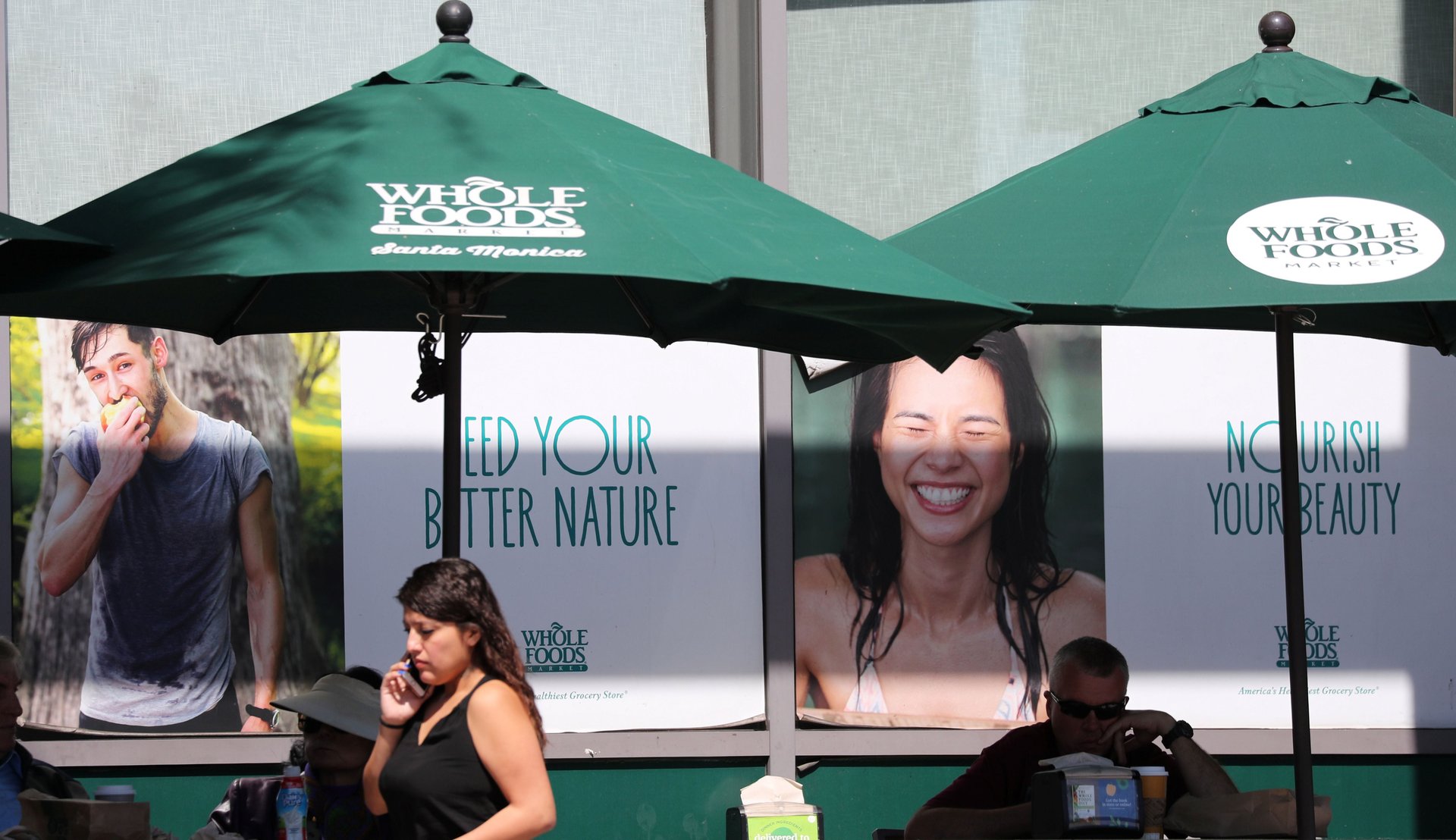Even Amazon can’t make Whole Foods a cheap place to shop
Whole Foods’ price cuts didn’t last long.


Whole Foods’ price cuts didn’t last long.
As soon as the ink dried on Amazon’s $13.7 billion acquisition of Whole Foods in August 2017, the e-commerce giant slashed prices on hundreds of items sold at the grocery chain. Amazon lowered prices on Fuji apples, organic rotisserie chicken, and, of course, avocados. The price cuts were part of Amazon’s unspoken effort to liberate Whole Foods from the “whole paycheck” meme that plagued it prior to the acquisition.
A year and a half later, prices are going the other direction.
Whole Foods in recent months has raised prices on hundreds of items, according to internal communications reported on by the Wall Street Journal (paywall). In a December email, the grocer listed 550 items on which it had raised prices, including crackers, olives, and cookies. This month, prices rose on Dr. Bronner’s soaps and Häagen-Dazs ice cream, the Journal reported. The average price increase was $0.66, though on certain items—like Dr. Bronner’s soaps—it was much higher.
According to the December email viewed by the Journal, Whole Foods noted that suppliers were charging more for certain items because of inflation. A Whole Foods spokeswoman told the Journal some suppliers are raising prices to offset increases in the costs of material, labor, and freight. The February hikes reportedly came after annual contracts expired for about 700 items, bumping up prices on about 50 of them.
The price increases at Whole Foods could reassure competing grocers who feared the pressure an Amazon-backed Whole Foods would put on the industry. “Hopefully they are still having trouble keeping their prices competitive,” Kemper Isely, co-president of Natural Grocers by Vitamin Cottage, said of Whole Foods on his company’s earnings call on Feb. 7. The latest price increases suggest that could indeed be the case.